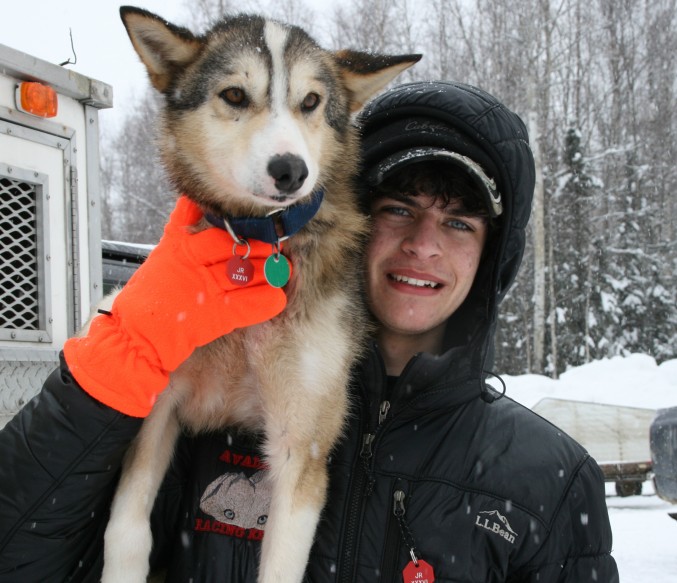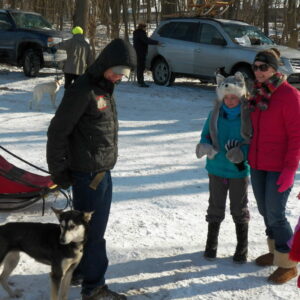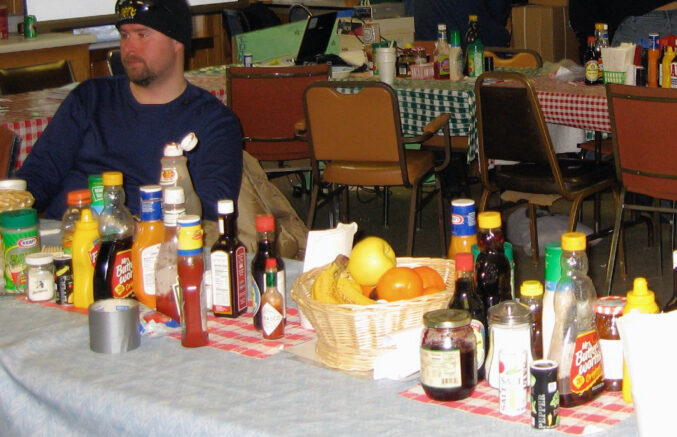
Jr. Iditarod start where mushers ages 14-17 hone their skills. Can your students see themselves here? Photo Credit: Jeff Schultz
Earlier this month I shared a post about the importance of representation; students need to see people like them doing, achieving, and experiencing all types of activities in this world. Representation provides a sense of belonging, hope, and inspiration. To quote Iditarod finisher Will Troshynski again, “Representation matters. Seeing a possibility for someone like yourself gives you hope. Hope gives you meaning. Seeing someone like yourself doing something you love to do…portrays a confidence in your ability to do a thing. All of a sudden you’re set up for success. That’s an incredible feeling.” Iditarod provides some powerful examples of this, if you take the time to look closely. At first glance most of my students will tell you that dog mushing – and Alaska – is way out of their comfort zone. They have very little in common with the elite dog mushers tackling the grueling 1,000 mile race across the interior of Alaska.

Noah Pereira, 2013 Jr. Iditarod Champion. Photo Credit: Iditarod
The challenge is to provide them with a connection so that they can see the possibilities for themselves in Iditarod. I start with location. My schools are in a suburb of Rochester, NY, an area with lots of snow and the potential for dog sledding. Could someone from our area really be in the Iditarod? We start with a little research together. A simple google search of “musher + Rochester” provides a helpful result. According to WHAM News, Noah Pereira was the youngest musher in the 2016 Iditarod and is from Brockport, NY, another suburb of Rochester.

Meeting 2013 Jr. Iditarod Champion Noah Pereira back home in Rochester in early 2014, before his two Iditarod finishes. Photo Credit: J.Westrich
With a name at hand we then scoured the Iditarod.com website for Noah’s bio and articles to give us more information. Noah was the first non-Alaskan to win the Jr. Iditarod at age 16 in 2013 and went on to race Iditarod in 2016 and 2018. Armed with this new data we visit (or revisit) our knowledge of a Venn diagram. The basic definition is that a Venn diagram is a visual organizer, made up of overlapping circles, that explores the relationship between sets of different things. We are going to see what we have in common with Noah! We then create a Venn diagram that shows us overlapped with Noah Pereira as residents of the Greater Rochester area.
How else can students connect to Iditarod mushers to find commonalities? Since Iditarod is gender inclusive it is relatively easy for students to start by researching a musher of the same gender. I start with the Musher list for the upcoming race and for the upcoming Junior Iditarod. A connection with a musher that they can follow this year makes it extra meaningful, and more so if it is a Junior musher who is close to them in age! With a little perseverance and patient research, students will find mushers who overlap with them because they:
- Are from your home location
- Enjoy the same sport as their parents (Redingtons, Seaveys, Bridgett Watkins)
- Have a sibling (like the Beringtons, Mackeys)
- Compete in another sport (Dallas Seavey was a High School wrestler, Brent Sass was a Nordic skier, Noah Pereira played soccer)
- From another country/speaks a language other than English (Newton Marshall-Jamaica, Joar Leifseth Ulsom-Norway, Mille Porsild-Denmark, Gerhardt Thiart-South Africa, Sebastian dos Santos Borges-France)
- Have a disability (Musher Bruce Linton is diabetic, Musher Rachel Scdoris is legally blind)
- Overcame Illness (Lance Mackey, Charlie Boulding, and DeeDee Jonrowe all raced post cancer and George Attla had polio and Cindy Abbott has a rare disease diagnosis)
- Have a dog (duh! or have a pet)

Condiments spread out for IditarodMushers at Takotna. Can your students find something on this table they also have at home? Photo Credit: Terrie Hanke
This activity can stay simple or be very complex depending on the grade level, time available, or the intensity of research. For the full lesson plan click HERE

2022 Jr. Iditarod champ, Emily Robinson. Photo Credit: Jim Deprez
This activity lets students see that, if they just take a little time, they can find something in common with anyone. It may not be big, but even something as small as sharing the same first name can help a kid make a connection to a musher and create a passionate follower of Iditarod for many years to come. Someday we might even see our students at the starting line in downtown Anchorage on the first Saturday in March – all because they saw themselves there!
Library Learnings: This month I’ll read The Three Snow Bears by Jan Brett to my Kindergarteners. This retelling of Goldilocks and the Three Bears takes place in the Arctic! Main character Aloo-ki loses her sled dogs and, in her search, discovers an igloo that holds everything she needs to settle down and wait for her dogs. This story is a perfect jumping off point to compare/contrast life in the Arctic with our lives – we all need delicious food, warm boots, and a place to rest.


